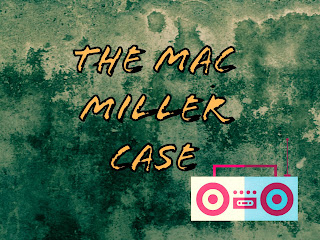Presenting the Three Main Learning Objectives of State Crime and Political White Collar Crime
Governmental and
political white-collar crimes happen time-and-time again in the United States,
and when the legal system intervenes to deal with these behaviors the public
becomes not only aware of the egregious experiences, but also cynical toward all
government-related functions. Much of
the state and political crime in this country is based on financial incentives,
acquiring public positions, and producing policies that cater to donors that
assisted public officials and organizations in some manner. Thus, I believe that the three main points
about the subject of state and political white-collar crimes are as followed:
1.) When an individual is learning about state crime
and political white-collar crime, it is important to know the differences
between each term, what types of actions are included in each term, and who the
offenders and victims are in the above-mentioned terms. Specifically, the term “state crime” is an
action by a state public official or state agency that causes harm to citizens
and public or private entities (Friedrichs, 2010, p. 128). For example, if a state governor or
legislative body were to enact a law that is not in line with the fundamental
concepts in the Constitution or Bill of Rights it can be considered to be a
state crime. More specifically, and to
use real-life examples, some states have had issues with passing restrictions for
voting processes and had them overturned by the federal court system. Some of these state-made voting laws barred
people from voting because of sociodemographic characteristics. In sum, state crime is a more general term used to describe organizational behavior in the public sector that is unlawful. The definition becomes fuzzy because public officials make up public organizations and thus the term is often interrelated with political white-collar crime.
The
term “political white-collar crime” is referred to as criminal activities
carried out by individuals in public office.
This term has a narrower definition than state crime and other
governmental crimes (Friedrichs, 2010, p. 128).
Particularly, political white-collar crime includes activities that
provide benefits to public officials and are acquired through illegal means or
are received to produce policies and laws that cater to individuals or
organizations who produced benefits to the public official (Friedrichs, 2010,
p. 128). For instance, a public official
can take monies or other gifts from an organization and, in turn, create laws
and make decisions that favor the organization that is delivering gifts to the
public official (Friedrichs, 2010, p. 128).
2.) Another
important point when learning about state crime and political white-collar
crime is that these illegal activities are often disguised as conventional
practices or acting under the idea of enforcing the law (Friedrichs, 2010, pp.
146-147). Being more precise, state
criminal justice systems have performed criminal activities and been forced to
change only after federal inquiry. That
is, police departments have been forced to change their internal policies
because of federal monitors and tragic miscarriages of justice, state court
system have had cases overturned because of faulty judicial proceedings and
corruption, and state operated correctional facilities have been mandated by
federal courts to provide better access to the legal system and change
conditions that were considered to be cruel and inhumane (Friedrichs, 2010, pp.
146-147). All of these state-based
crimes cause harm to the public because of the obligations that state officials
are supposed to adhere to. Individuals
who are victims of state crimes deal with the inappropriate actions as well,
and it is usually their expressions that cause the state-based crimes to be
noticed. The inability of state agencies,
and individuals who are employed by the state, to recognize these crimes is a
reflection of how positions of authority can be abused or misinterpreted, which,
in turn, causes harm to the public on a general and specific level (Friedrichs,
2010, pp. 146-147).
3.) Lastly, I
believe that an important point to know when learning about state crime and
political white-collar crime is that it happens in all levels of government and
the organizations that comprise each branch of government in both the state and
federal systems (Friedrichs, 2010, pp. 147-156). As above-mentioned, the executive,
legislative, and judicial bodies in both the state and federal systems have had
many issues that are within the realm of criminal activities. These illegal actions are not a new
phenomenon, and throughout the United States’ history there have been many
examples of crimes committed by members of the government and the agencies that
make-up the structure of the three branches of government (Friedrichs, 2010,
pp. 147-156). Providing examples is
easy, and some of the unlawful activities include slavery, genocide against
Native Americans, poorly administered labor and health laws, discrimination
against females, bribery to public officials, voter fraud, obstructions of
justice by politicians, and violations of the Bill of Rights. Again, the examples are abundant in our
nation’s history, yet the concentration on street-level crimes and social
status has blinded many citizens and offenders when unlawful behaviors occur in
a different format other than street-level and violent offenses.
Reference:
Friedrichs, D. O.
(2010). Trusted criminals: White collar
crime in contemporary society
(4th
ed.). Belmont, CA: Wadsworth.
 Photo Credit: Benjamin J. Bolton
Photo Credit: Benjamin J. Bolton

Comments
Post a Comment